Impressions from Irma Indelible on the Florida Farmscape [Slideshow]
At nearly 500 miles wide, with an angry eye staring in this direction, it was certain that major Hurricane Irma was going to strike the Sunshine State — the ultimate question was how hard. Well … we found out.
-
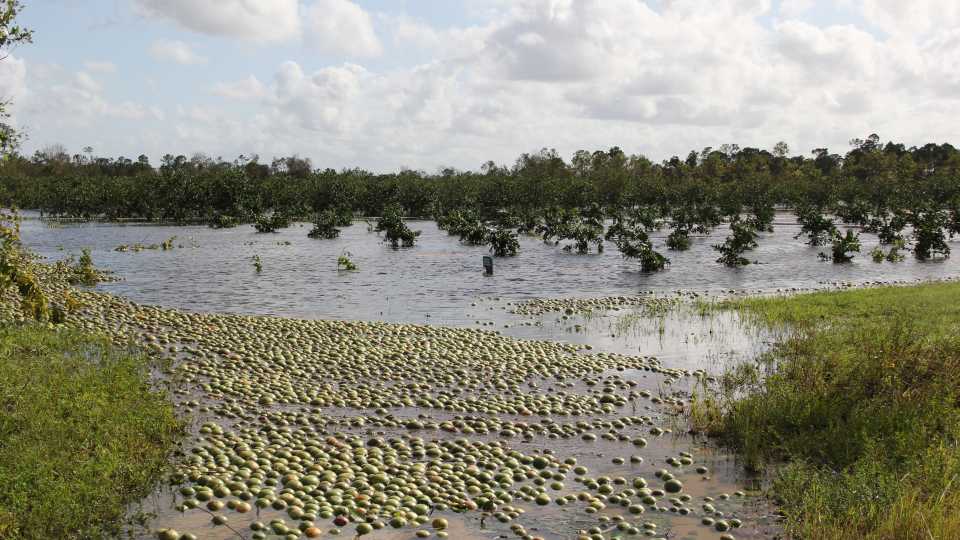
-
1 of 31
Southwestern Assault
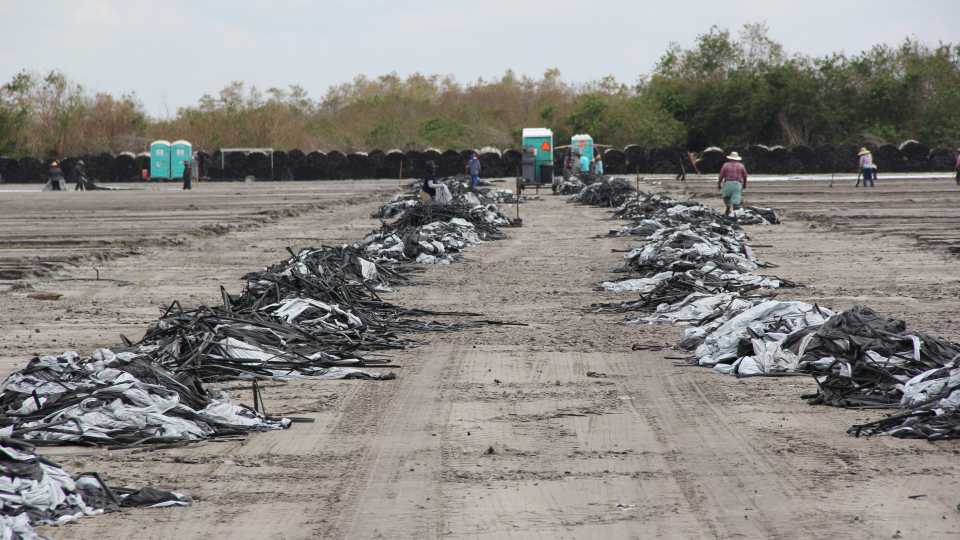
When it finally appeared Hurricane Irma’s track had settled with Southwest Florida in its sights, growers and researchers in the area were bracing for everything from flooded fields and groves, plastic lifted and torn, plants sandblasted and cut off, citrus trees blown over, branches broken, and fruit blown off trees. Those scenarios are what the storm left behind. “Fortunately [for vegetables], we were fairly early in the season with about 25% to 30% of plastic down, but growers had only been planting for about three weeks, so maybe 10% [maybe 15%] of crop was in the ground,” Gene McAvoy, Hendry County UF/IFAS Extension Agent based in LaBelle, said.
Photo by Monica Ozores-Hampton -
2 of 31
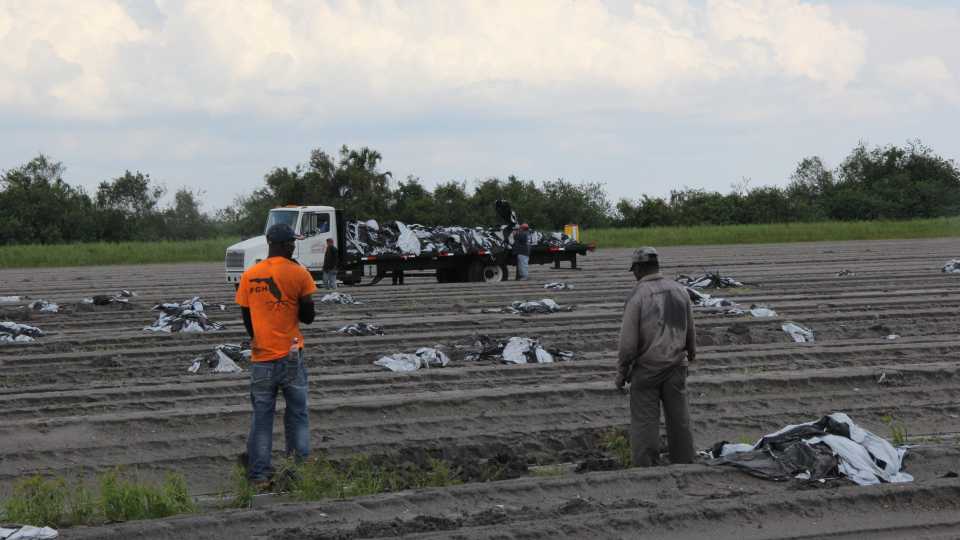
In Irma's wake was plenty of farm field cleanup and recovery all up and down the Florida peninsula. The Florida Department of Agriculture and Consumer Services announced preliminary agricultural damages caused by the storm in the state at more than $2.5 billion.
Photo by Monica Ozores-Hampton -
3 of 31
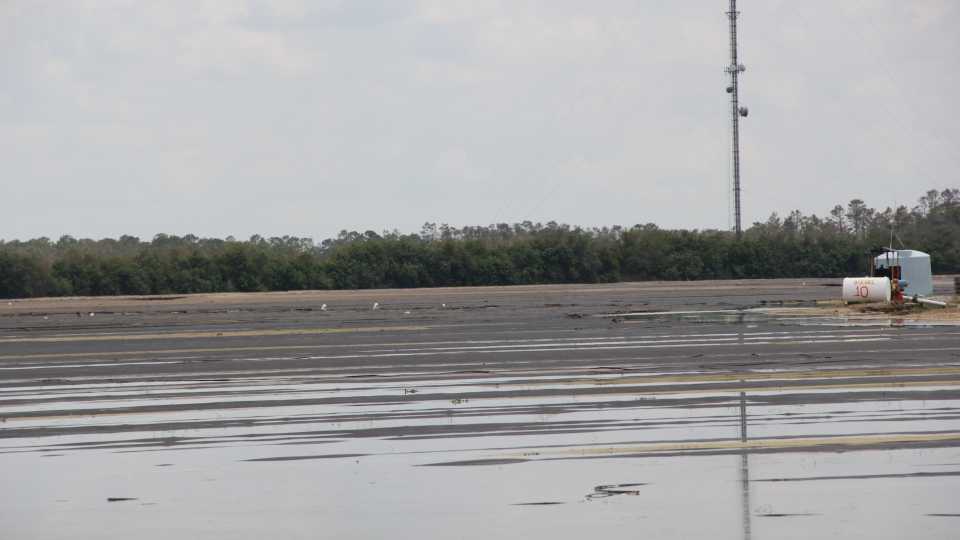
Hurricane Irma's tropical punch put many fields under water. This occurrence put vegetable growers behind in their planting schedules for the winter market. “We had water standing two and a half feet on top of some of those fields,” said Calvin Arnold, Director of the UF/IFAS Southwest Florida Research and Education Center in Immokalee. Photo by Monica Ozores-Hampton
-
4 of 31
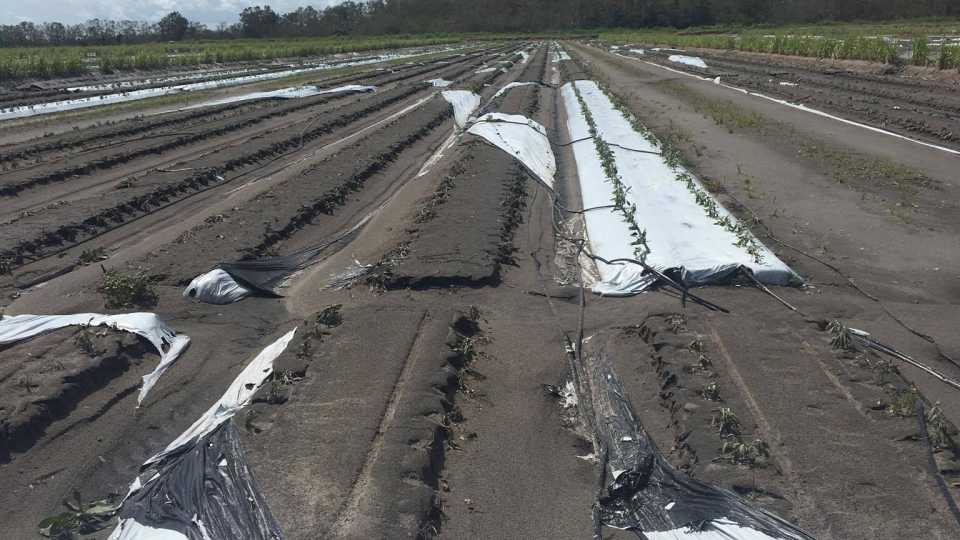
Materials, such as field plastic and irrigation tubing, might be harder to come by with so many acres needing repleneshment.
Photo by Charles Obern -
5 of 31
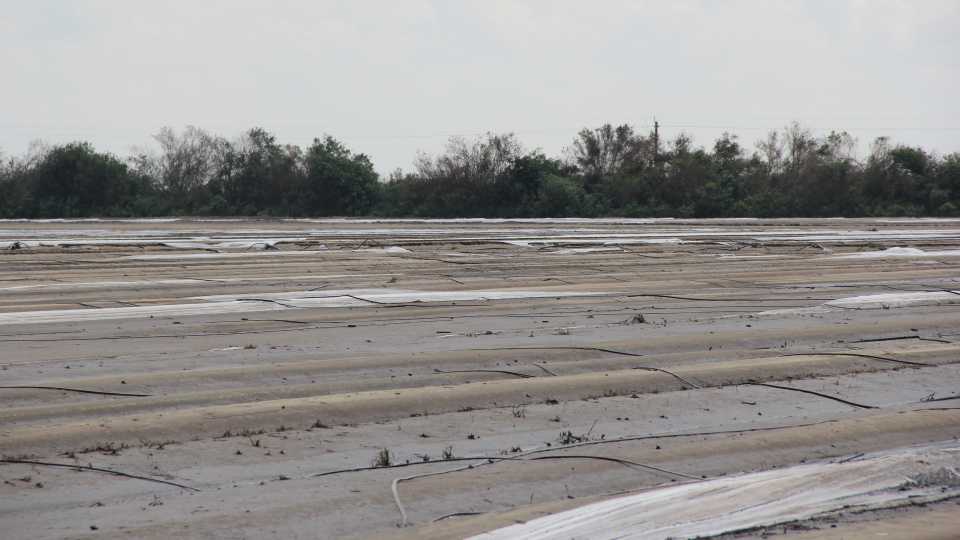
This vegetable field in Southwest Florida was left barren and in need of reshaping after Irma got hold of it. Vegetable growers around the state are blitzing to catch up from lost time.
Photo by Monica Ozores-Hampton -
6 of 31
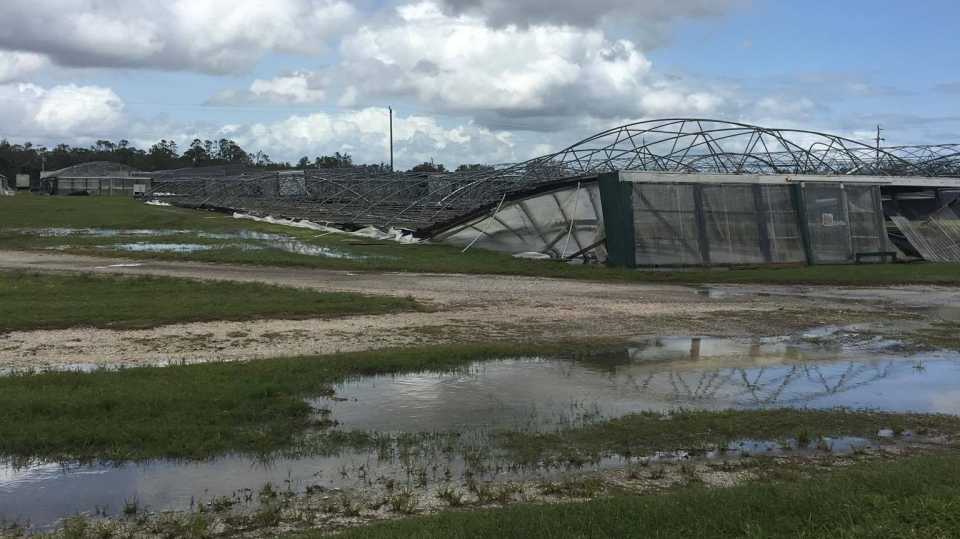
Flooded fields aside, protected ag structures took a beating from Irma. These greenhouses near LaBelle were flattened.
Photo by Charles Obern -
7 of 31
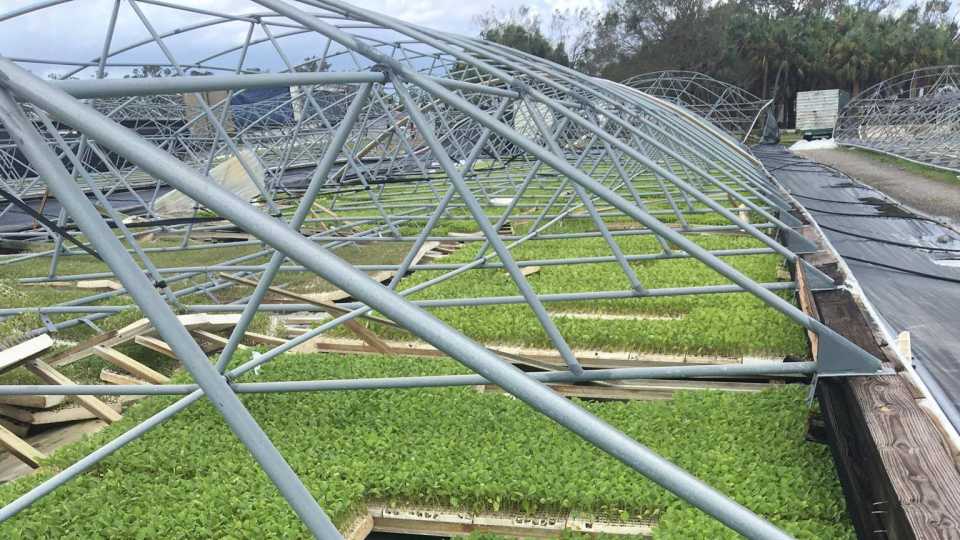
Benches of specialty greenhouse vegetables under these protected structures near LaBelle were left exposed by Irma.
Photo by Charles Obern -
8 of 31
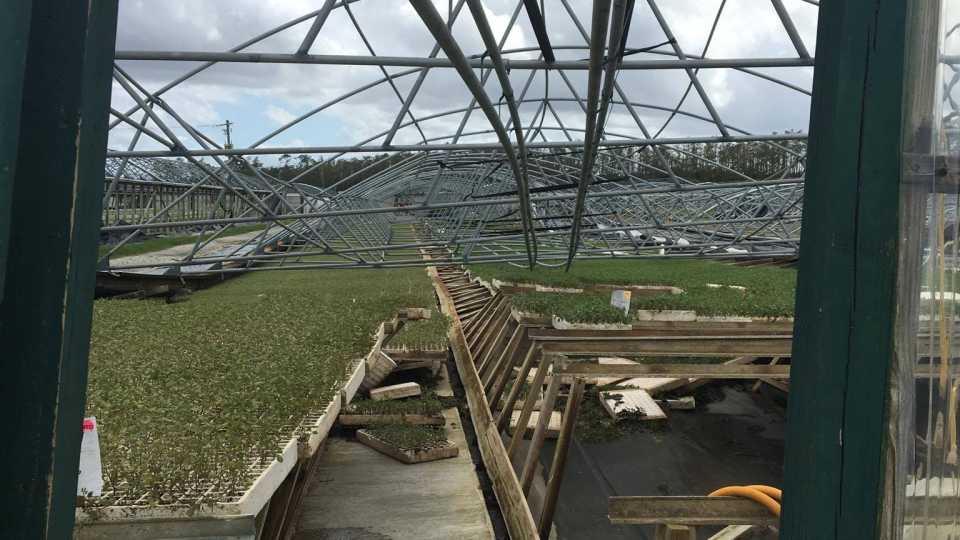
Recovery and repair are the positive paths leading forward from Irma's wrath.
Photo by Charles Obern -
9 of 31
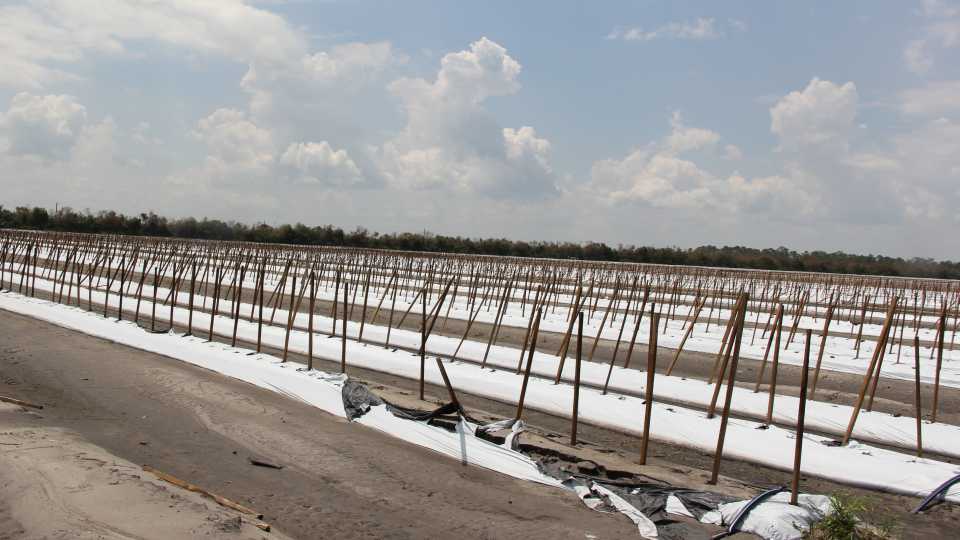
Rows of tomato stakes in Southwest Florida were shaken and split by Irma's brute force.
Photo by Monica Ozores-Hampton -
10 of 31
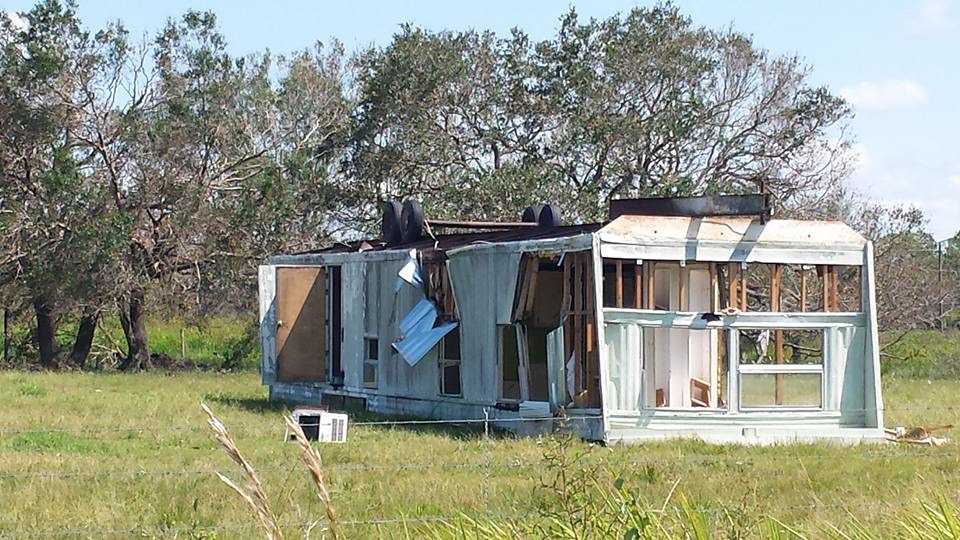
Beyond crop and structure damage, many farmworkers and their families have had their world turned upside down (in this case, literally) by Irma.
Photo by Gene McAvoy -
11 of 31
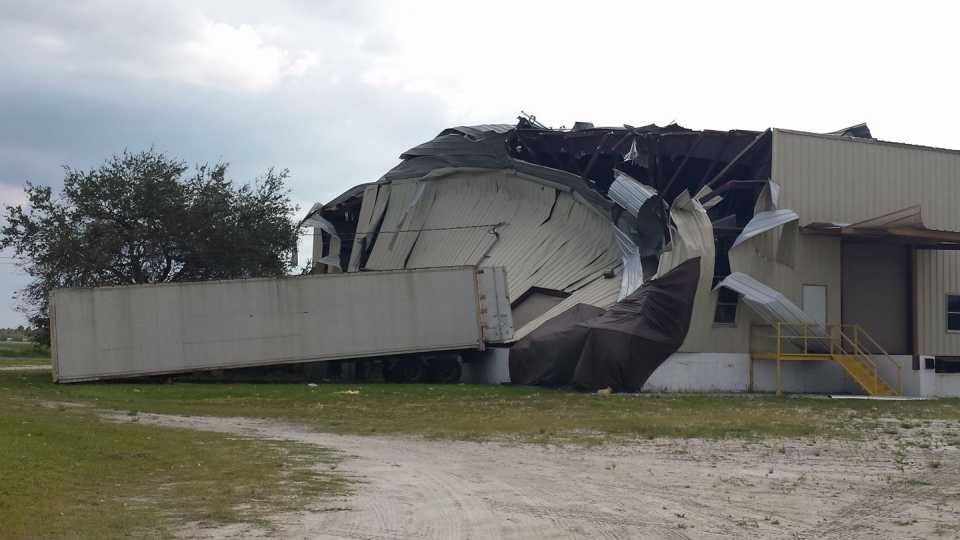
Hurricane Irma's winds were ferocious. This vegetable packinghouse in Southwest Florida was pummeled.
Photo by Gene McAvoy -
12 of 31
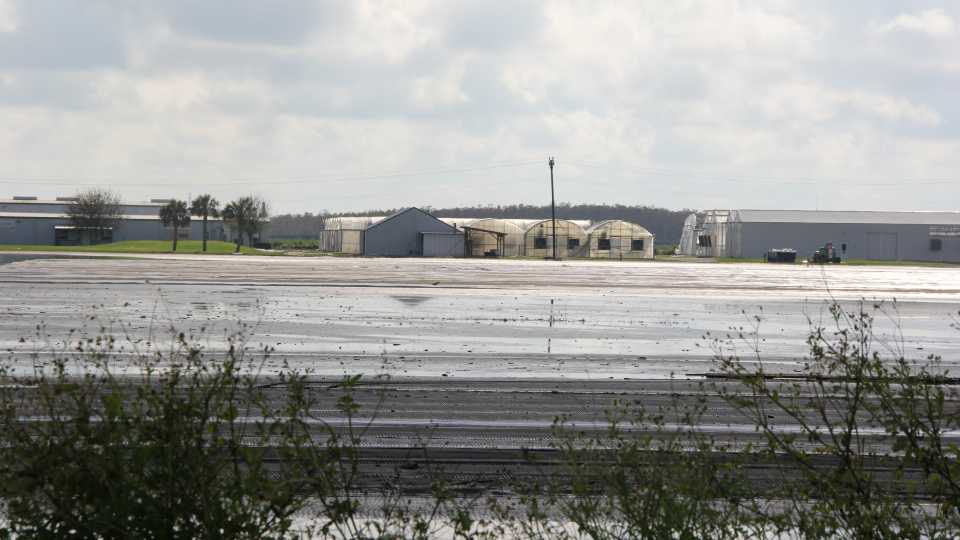
Whether it be crops, equipment, and/or structures, Irma's impacts were seen far and wide.
Photo by Monica Ozores-Hampton -
13 of 31
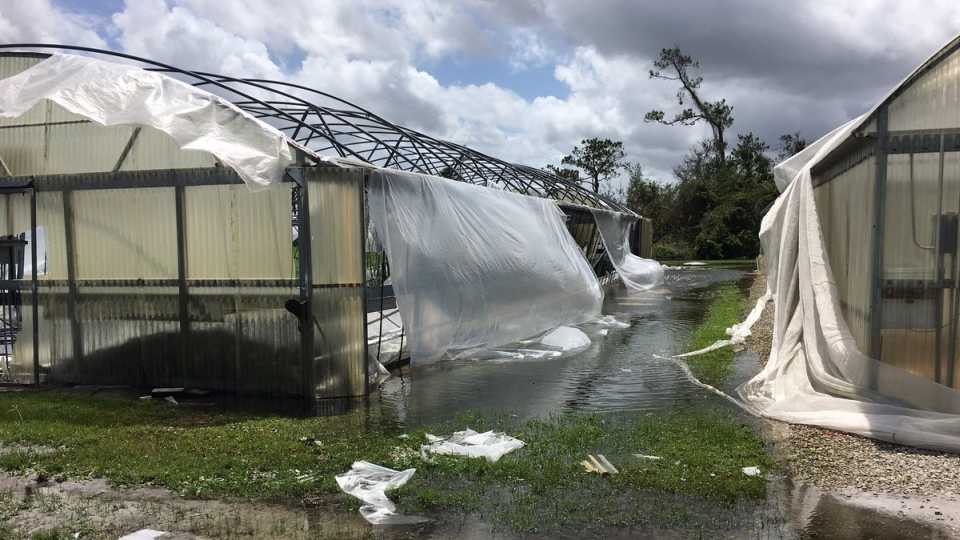
Greenhouses at the UF/IFAS Southwest Florida Research and Education Center (SWFREC) in Immokalee were not spared by Irma's wicked winds and rain. “We had major damage to four of our older greenhouses,” confirmed Calvin Arnold, SWFREC Director. “One was totally destroyed. The other three had major damage.”
Photo by Monica Ozores-Hampton -
14 of 31
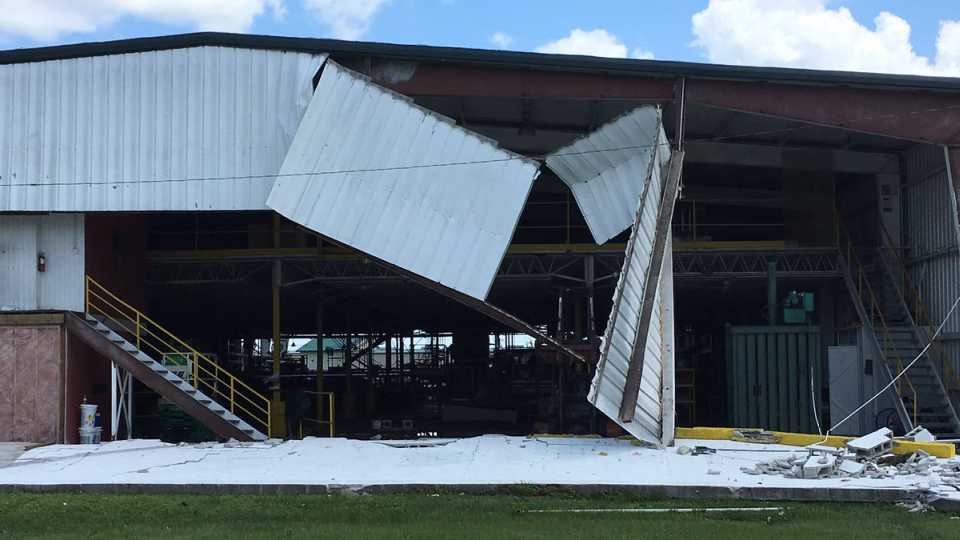
This vegetable packinghouse in Immokalee, FL, fell victim to winds and rain that packed a punch.
Photo by Monica Ozores-Hampton -
15 of 31
Tri-County Trouble
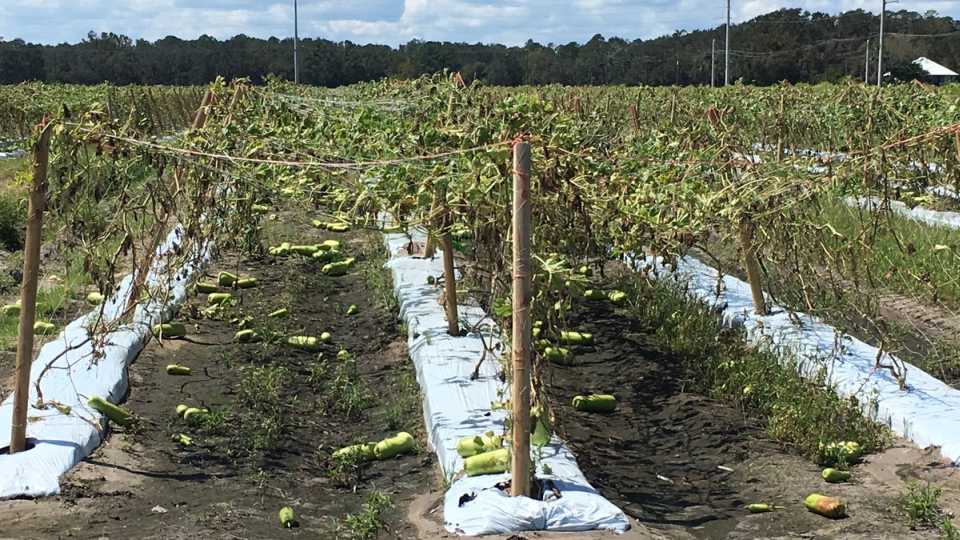
Hurricane Irma devastated nearly 200 acres of Asian vegetable crops in St. Johns County, FL, including this field of long squash near Elkton.
Photo by Bonnie C. Wells -
16 of 31
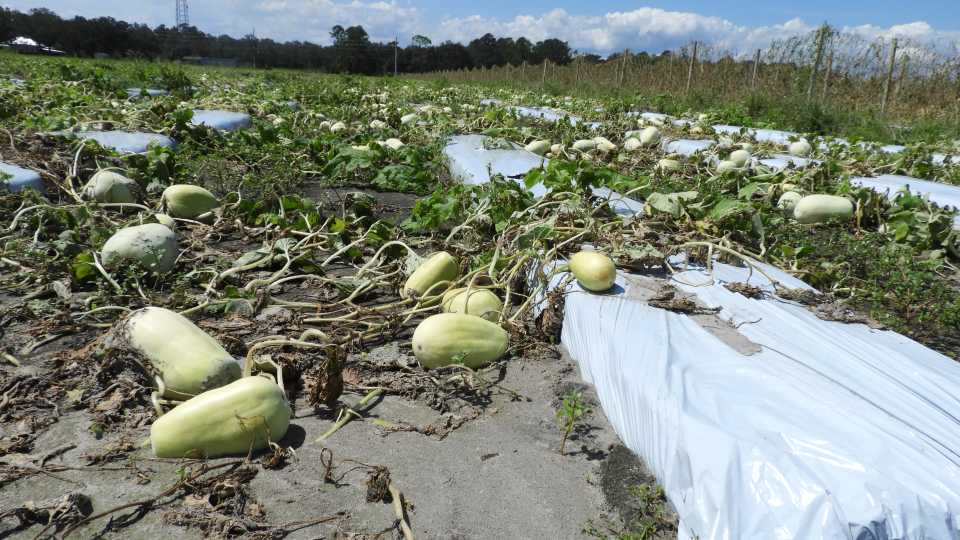
Winter melon and long squash were included in the nearly 200 acres of Asian vegetables in St. Johns County, FL, that were damaged as a result of the high winds and inundating rainfall brought to the area by Hurricane Irma.
Photo by Bonnie C. Wells -
17 of 31
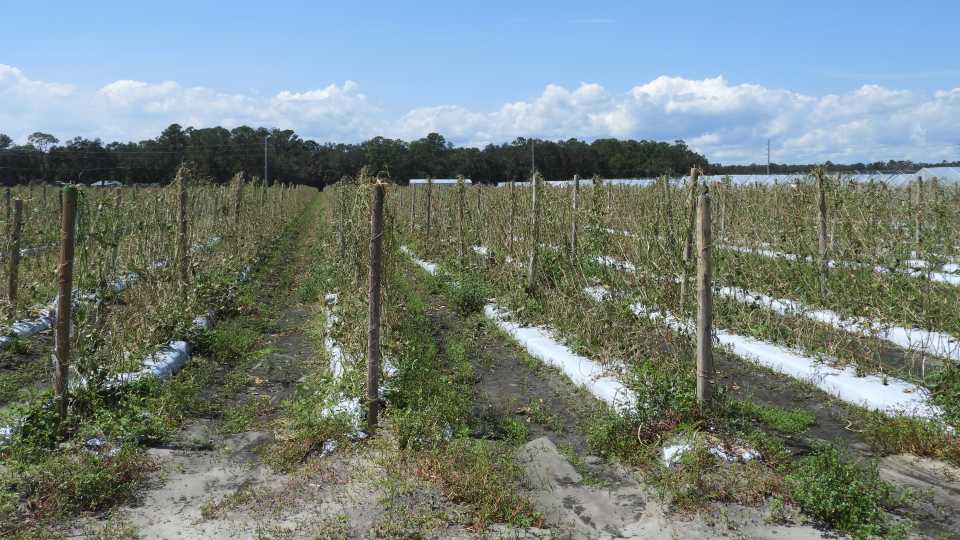
Hurricane Irma left these rows of yardlong bean in St. Johns County, FL, tattered.
Photo by Bonnie C. Wells -
18 of 31
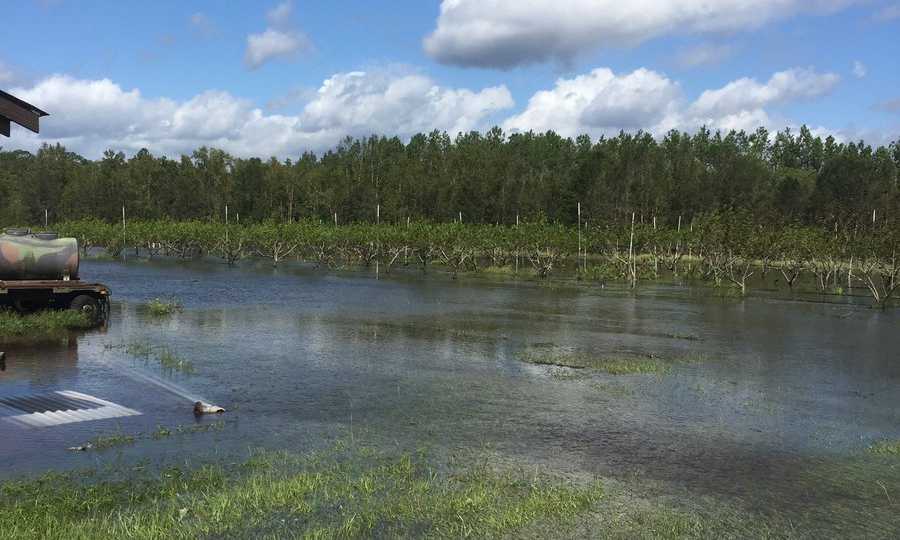
Onsite demonstration plantings of peaches and grapes at the UF/IFAS Hastings Agricultural Extension Center that flooded for multiple days were exposed to heightened pest and disease pressure. On top of that, persistent rainfall in the weeks after Irma has caused planting challenges for growers of other crops in that area including cabbage, broccoli, and Brussels sprouts.
Photo by Gary K. England -
19 of 31
Citrus Squeezed
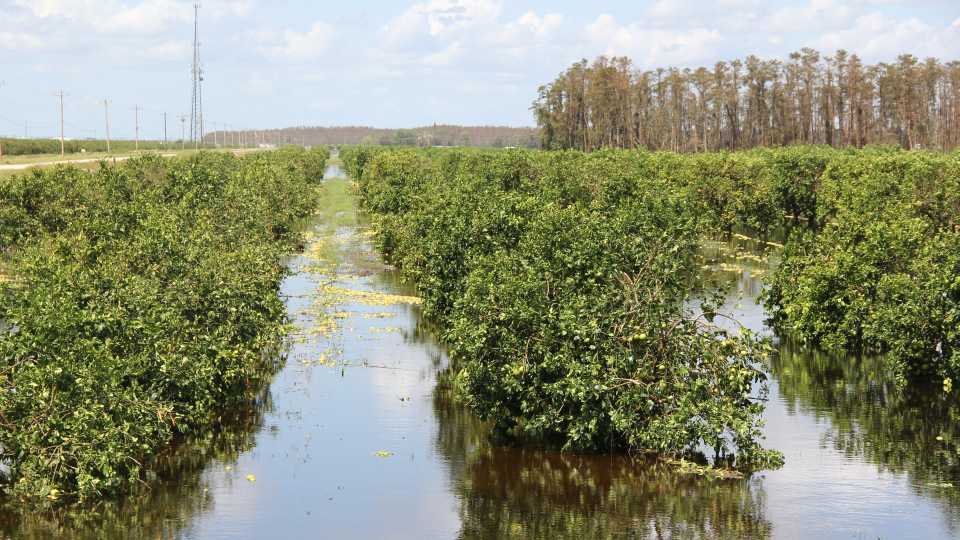
To say the Florida citrus industry took a big hit from Irma is an understatement. This citrus grove in Southwest Florida was swamped by Hurricane Irma and was indicative of many around the state that were socked. Some blocks sat in water for more than a week.
Photo by Monica Ozores-Hampton -
20 of 31
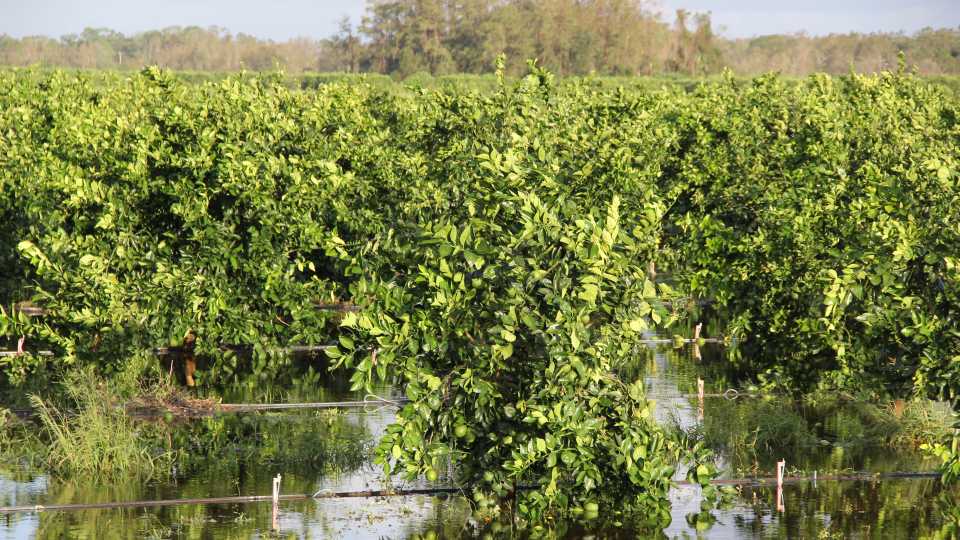
Roots submerged for days after Irma will likely spell more trouble for citrus trees already fighting off pest pressure and disease.
Photo by Monica Ozores-Hampton -
21 of 31
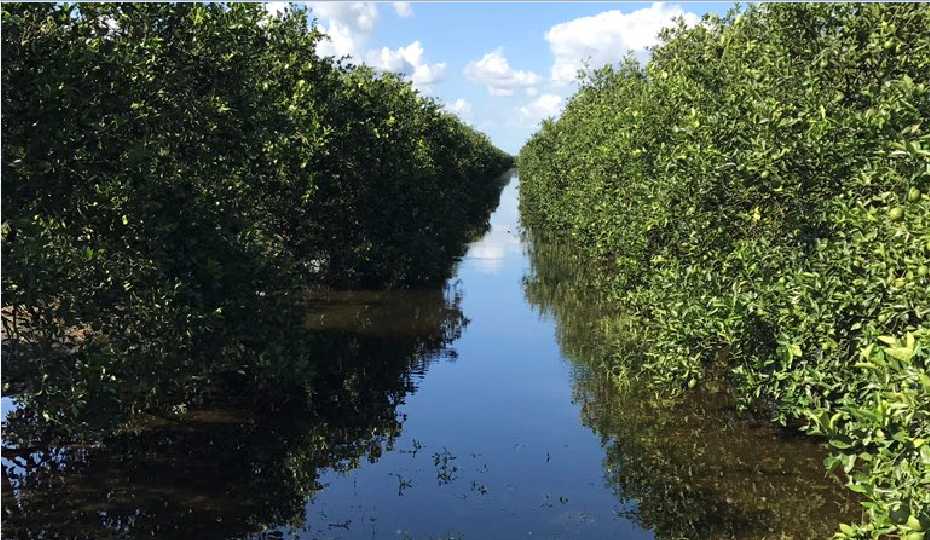
Close attention to citrus tree health has become a top priority following the storm.
Photo by Jonathan Brown -
22 of 31
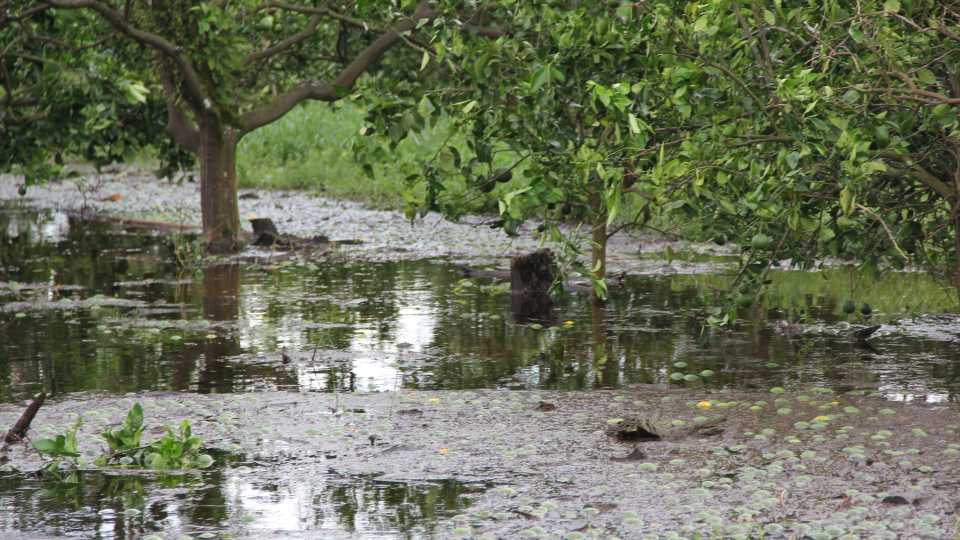
Among the challenges presented by Irma included trying to pump out flooded groves and fields while still trying to get much-needed irrigation to super-stressed crops and trees.
Photo by Monica Ozores-Hampton -
23 of 31

The amount of fruit shaken off citrus trees by Irma's winds was hard to fathom. Initial damage assessments to the states's citrus industry rung up nearly $761 million.
Photo by Monica Ozores-Hampton -
24 of 31
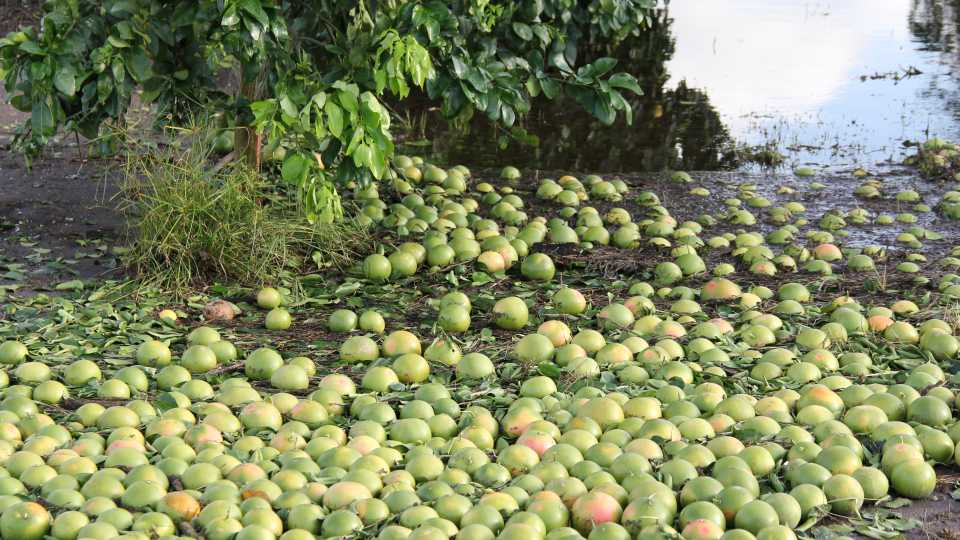
Fruit that wasn't blown off citrus trees dropped in the days after the storm. The trend continued in the weeks following, and is likely to ensue even in the coming months due to the massive stress endured by blocks and blocks of plantings.
Photo by Monica Ozores-Hampton -
25 of 31
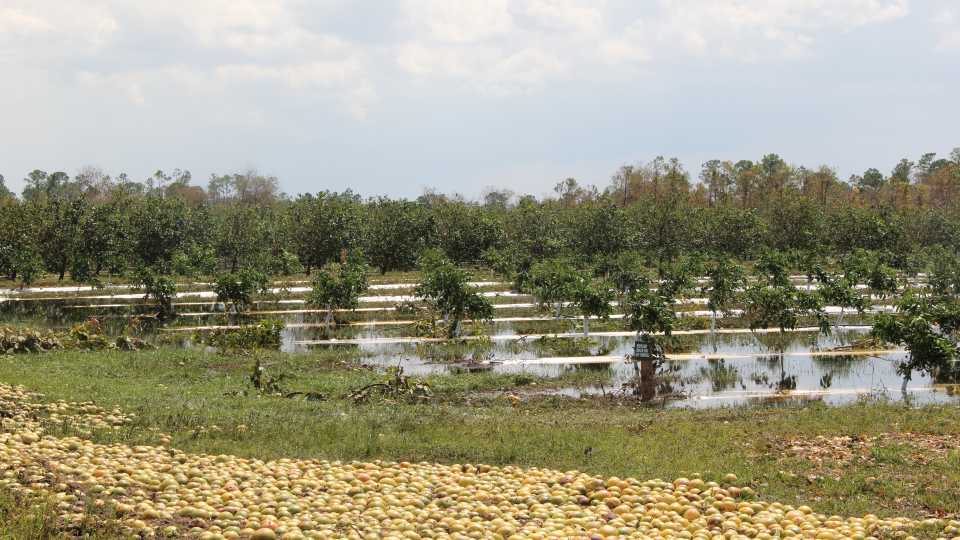
After Irma, many are wondering how much it will affect USDA's citrus forecast for the 2017-2018 season.
Photo by Monica Ozores-Hampton -
26 of 31
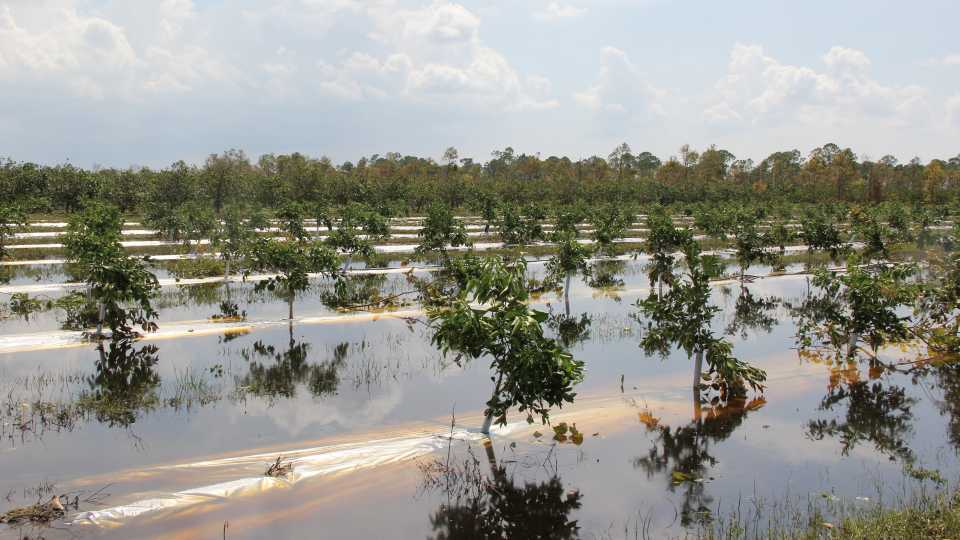
This planting of young citrus trees lay submerged in the wake of Irma. Photo by Monica Ozores-Hampton
-
27 of 31
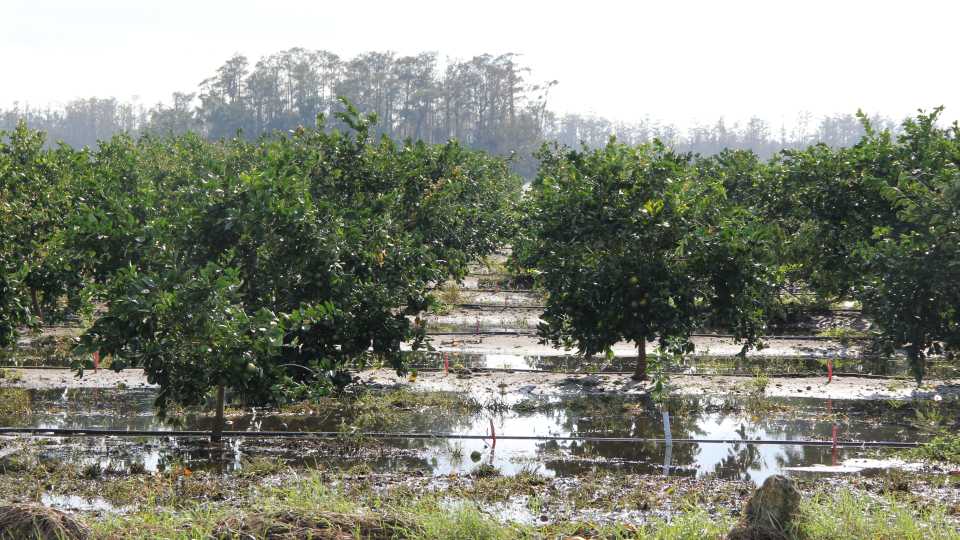
Soggy, water-logged soils will make the road to recovery for citrus trees that survived Irma's blast that much harder as soilborne pathogens could potentially proliferate.
Photo by Monica Ozores-Hampton -
28 of 31
Widespread Impact
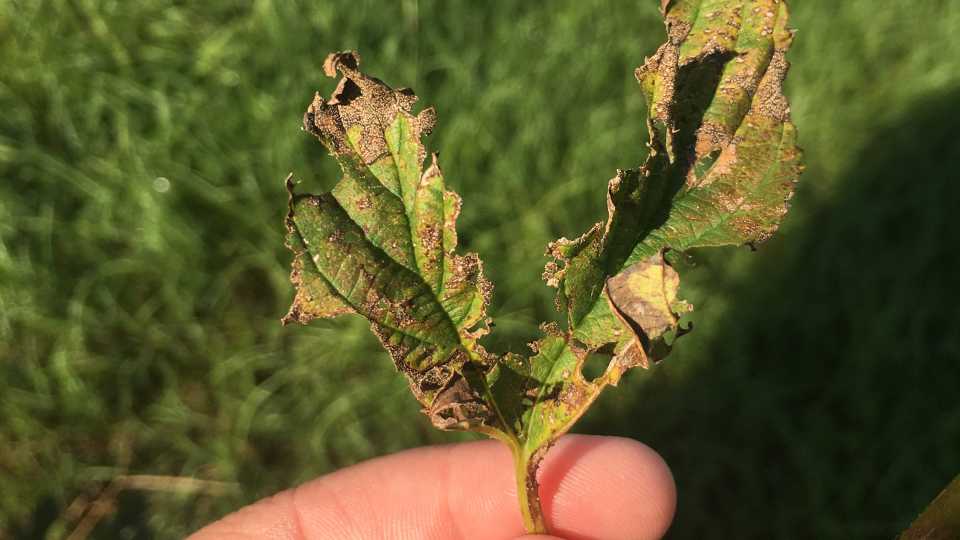
No matter the crop and location, signs of storm stress are prevalent. Scientists at the UF/IFAS Mid-Florida Research and Education Center in Apopka are taking note of how hop plants there reacted after the storm. Leaves and cones took on a scorched, sand-blasted appearance.
Photo by Caroline Roper, UF/IFAS -
29 of 31
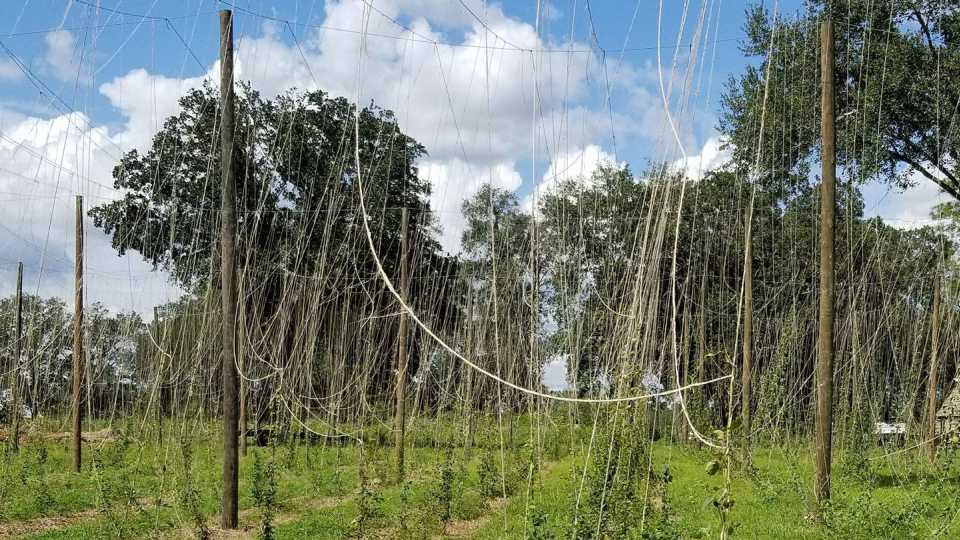
This hop yard in Dade City, FL, was left in a bit of a mess after the eye of Hurricane Irma passed over it with 100 mph winds. Fortunately, there was no structural damage to the yard itself.
Photo courtesy of Florida Hop Growers LLC -
30 of 31
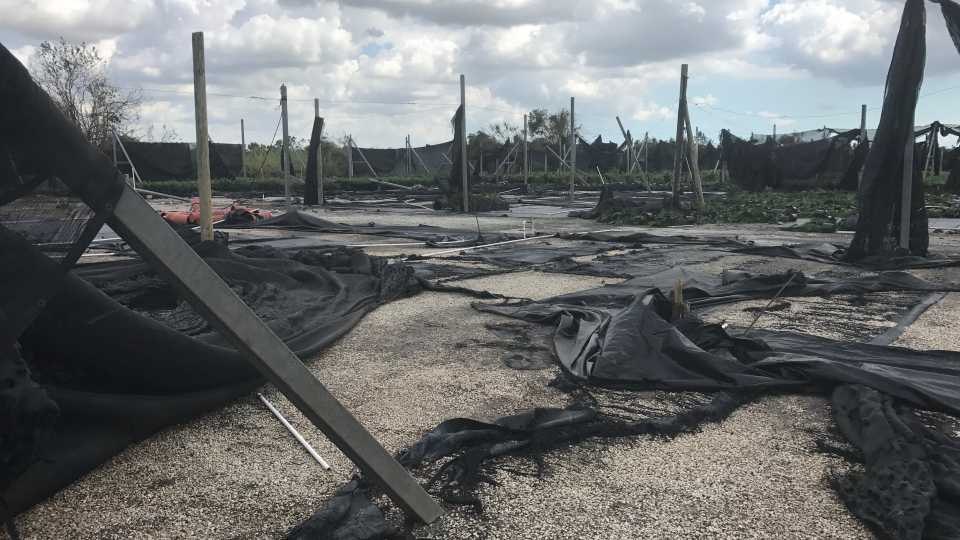
The greenhouse, nursery, and floriculture industries in the Sunshine State took quite a blow. Preliminary losses for the sector added up to almost $625 million, according to the Florida Department of Agriculture and Consumer Services. When it came to describing the devastation, Florida Nursery, Growers and Landscape Association CEO Ben Bolusky summed it up well, "Almost all have lost some and some have lost all.”
Photo courtesy of FNGLA -
31 of 31
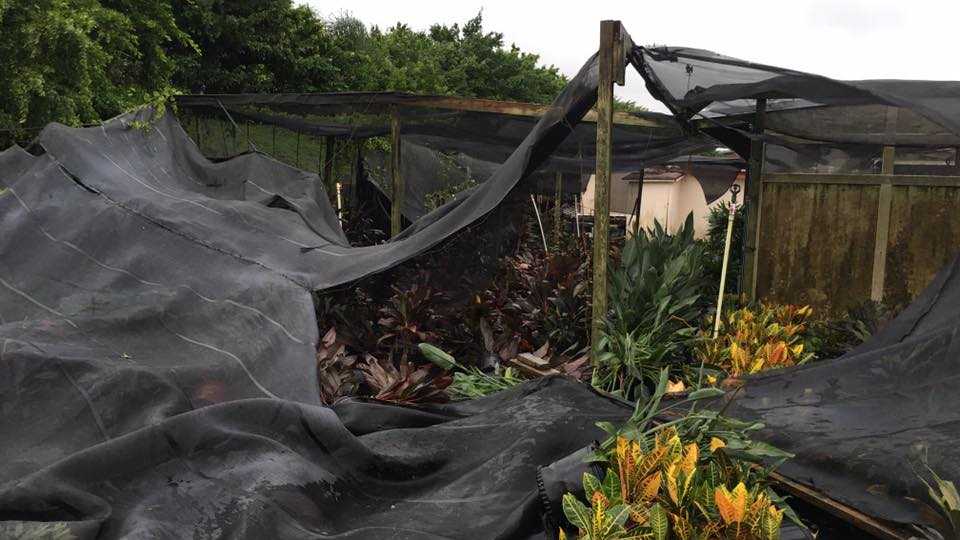
Florida’s nursery and landscape industry generates $21 billion in total output sales and provides jobs for more than 232,000 people. In the area of Florida most hit by Hurricane Irma, the nursery and greenhouse growers produce $4.5 billion in farm gate sales of plants, flowers, and trees.
Photo courtesy of FNGLA
View all
Southwestern Assault
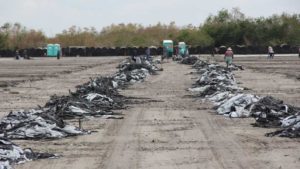
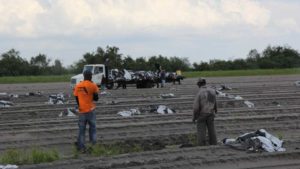
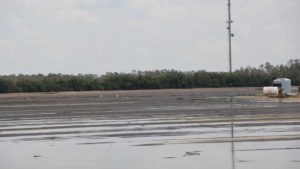
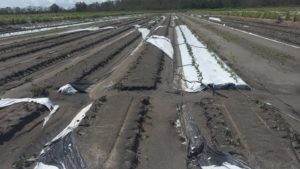
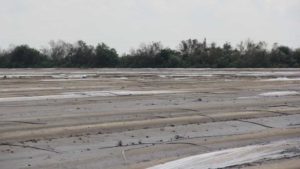
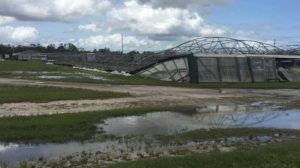
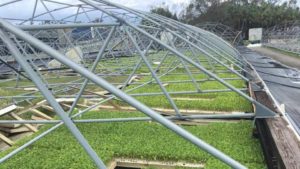
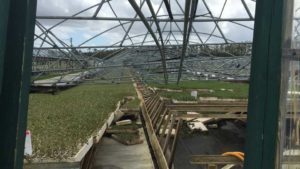

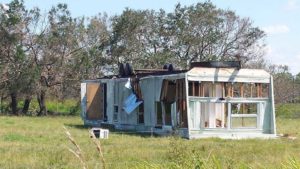
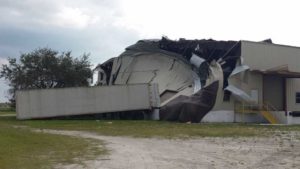
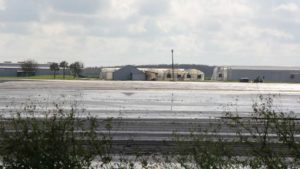
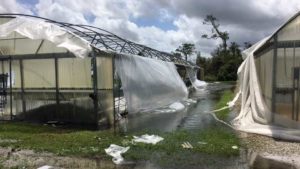
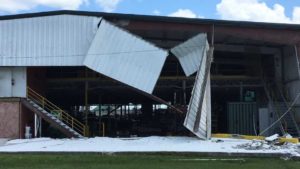
Tri-County Trouble
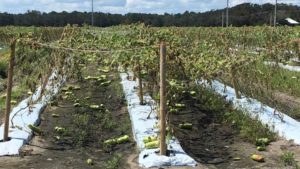
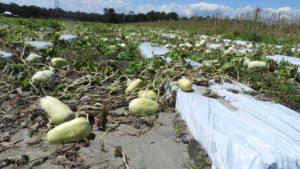
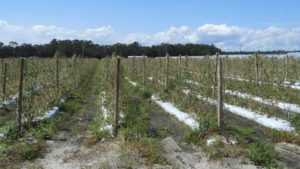
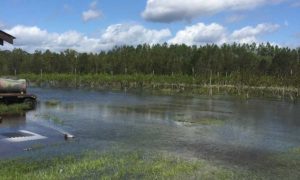
Citrus Squeezed
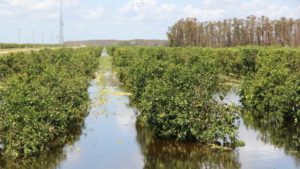
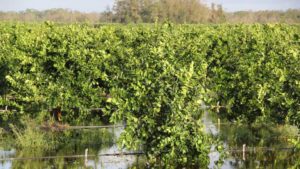
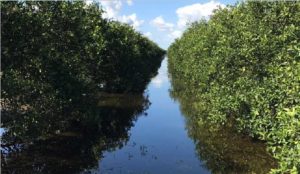
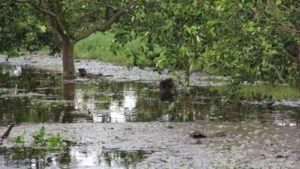
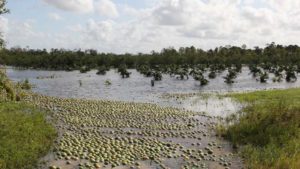
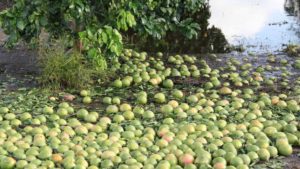
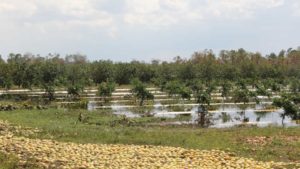
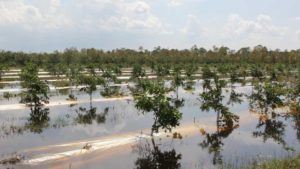
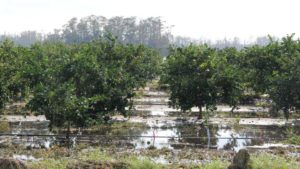
Widespread Impact
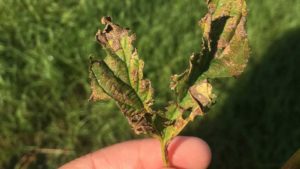
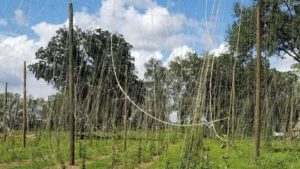
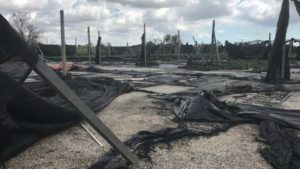
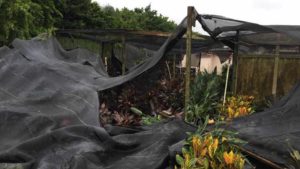
The storm’s size, strength, and projected final track all but guaranteed every inch of the state would feel effects. That certainly turned out to be the case. From south to north and east to west, Irma made sure to leave quite an impression — lots of them.
The images that came streaming in after the storm from all corners of the state’s agriculture industry told the story of destruction, but also signaled a survival mode. The story is far from over as we all work hard to recover.
“Growers are resilient … Growers are used to adversity … ” were phrases uttered by politicians, industry association leaders, Extension agents, and others in the days leading up to and following the storm. Those assessments could not be more spot-on.
We’ve been here before (think back to the hurricane-heavy years of 2004 and 2005) and successfully rebuilt from the ground up. We’re doing it now and will again if and when the time comes. Let’s hope it’s not for a while — or better yet, maybe never.
Slowly, but surely, we’re emerging from Irma’s scourge — wiser, more determined, and stronger than before.
Scan the photo gallery above of impressions left by Irma on our industry that won’t soon be forgotten.
BTW: Thank you to all who took time to share imagery and information that only those on the ground and in the trenches can provide.
Subscribe Today For

Paul Rusnak is the Senior Online Editor for Meister Media Worldwide's Specialty Crops Division, which consists of American Vegetable Grower, American Fruit Grower, and Greenhouse Grower magazines, all Meister Media brands. He is based in Northeast Florida. See all author stories here.












